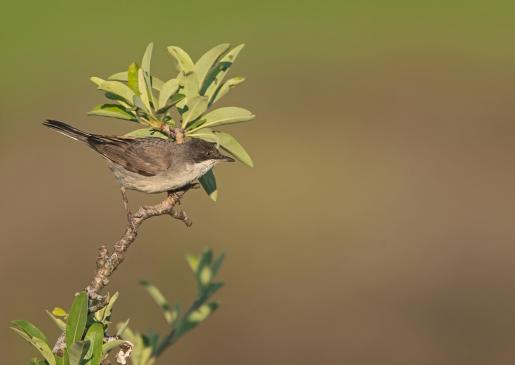Identification
The male has a grey upper part, tail and belly and a black head that contrasts with the white chin and neck. The female has a brown body and grey head. In both sexes, a very distinctive red eye ring can be seen at close range. The legs are flesh-coloured and the beak is grey with a black tip.
Distribution - Habitat
It has a permanent presence around the Mediterranean coast and the more northerly populations (northern Greece, Bulgaria and the Black Sea coast) migrate further south in winter, as far south as North Africa.
Interesting Information
- It feeds mainly on arthropods (insects and their larvae, spiders, etc.). In autumn and winter it is particularly fond of fruits and berries from the typical shrub species of the Mediterranean region, such as the wild berrie, the lentisc, the terebinth and, of course, the olive tree: it eats small olives or typical wild olives!
- Its nest is well hidden in bushes, low above the ground and made of grass.
- Although the nest is mainly built by the female, both sexes lay their eggs (usually 3-5).


